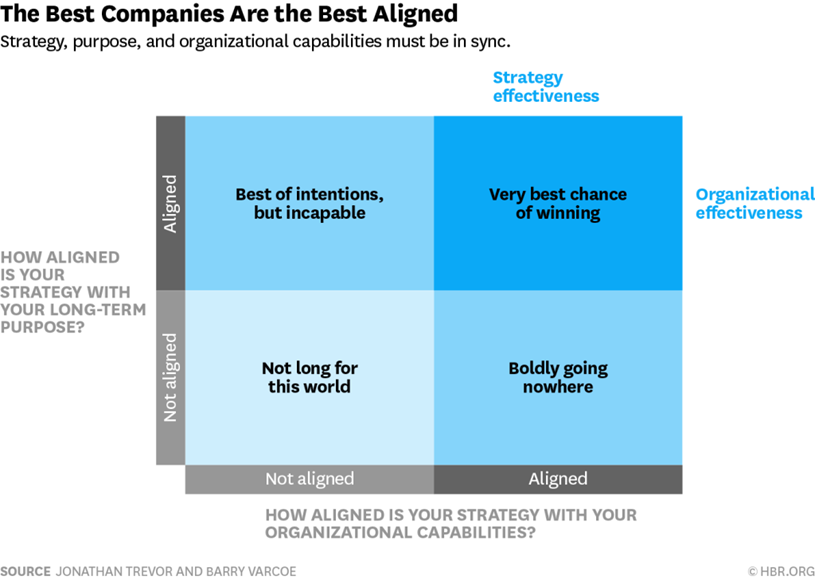Strategic and Systemic Alignment – why they really matter

In my early days at Compass Learning, I designed and delivered a wide range of top team strategic alignment and development programs. Where the focus was on enabling and empowering team members to metaphorically “sing from the same song sheet†– by agreeing to and articulating a common purpose, clarifying roles and goals and driving mutual accountability. Also, by establishing, the most effective communication, decision making, and problem-solving processes, all of which were designed to cultivate trusted relationships. The outcomes included increased cohesion, collaboration, and agility, making them resilient and sustainable as high performing and fast-moving effective teams – who responded quickly to change, often in the face of disruption and adversity.
Since I evolved Compass Learning, more than six years ago, into ImagineNation™Â where our focus is on enabling people and organization to be, think and act differently to adapt and grow through disruption. I realized that strategic alignment is more important than ever, especially in a globalized, connected and VUCA world.  Where leaders, teams, and organizations, who are seeking to thrive and survive in the playing fields of the future, must collectively and cohesively learn to “sing from a new and different song sheetâ€.
Aligning strategically and systemically
This new song sheets agency involves humming tunes about customer-centricity, adaptiveness, collaboration, and innovation, as the most effective ways of improving organizational performance and growth.
Where the outcome is a strategically and systemically aligned, resilient and sustainable organization.
This involves aligning systemically all elements of a business – the market strategy, leadership team, operating environment and culture. As well as the way the company itself is organized, led and managed so it can adapt, connect, evolve and create value, and great results, through innovation and disruption.
All these critical elements need to be aligned, in such a way as to best support the fulfillment of its long-term purpose for change, adaptation, growth or innovation.
Especially in a competitive and globalized world, where speed and agility matter most!
How do you know whether you are aligned, or not?
Taking a balcony perspective, authors Jonathan Trevor and Barry Varcoe, in a recent HBR article https://hbr.org/2016/05/a-simple-way-to-test-your-companys-strategic-alignment present a simple model illustrated below:
Where does your organization sit?
- Very best chance of winning: Companies that score highly on both scales stand the very best chance of winning in their competitive field.
- Best of intentions, but incapable:Â Companies that score highly on the purpose and strategy alignment scale, but low on the strategy and organization scale, are more or less incapable of implementing their strategy as intended.
- Boldly going nowhere: Businesses that have strong alignment between their strategy and organization, but weak alignment between strategy and purpose are classed as “boldly going nowhere.â€
- Not long for this world: Companies that score low on both scales are in crisis, even if it isn’t immediately obvious.
How might you then answer these four questions?
Take a moment to pause, retreat and reflect – how you might respond to the following five questions about your level of strategic alignment to your long-term purpose vision for change, adaptation, growth or innovation:
- How well is your business strategy supporting the fulfillment of your company’s purpose?
- How is your leadership team aligned and enabled to effectively deliver the business strategy?
- How well is your organization overall, especially your culture, supporting the achievement of your business strategy?
- How aligned is your strategy with your overall organizational capability?
- How resilient and sustainable is your organization in the face of exponential change and disruption?
Simplifying strategic alignment
At ImagineNation™Â we searched the world to discover better ways of helping our clients understand the importance of strategic alignment to help them build a more resilient and sustainable organization. To enable them to shift from taking the short term “fix it†approaches, aptly described as “innovation theatre†to move toward understanding and resolving the deeper root causes.
In a recent HBR article https://hbr.org/2019/10/why-companies-do-innovation-theater-instead-of-actual-innovation, Steve Blank reinforces this perspective:
“Today, as large organizations are facing continuous disruption, they’ve recognized that their existing strategy and organizational structures aren’t nimble enough to access and mobilize the innovative talent and technology they need to meet these challenges. These organizations know they need to change, but often the result has been a form of organizational whack-a-mole – a futile attempt at trying to swat at problems as they pop-up without understanding their root cause.
Ultimately, companies and government agencies need to stop doing this or they will fail.â€.
He reinforces the need for simplifying strategic alignment, supporting organizational redesign, which our research and experience, at ImagineNation™Â requires:
- Exploring differing methodologies to qualify and quantify, the impact of strategic alignment, on performance. Identifying both the tangible gains and losses across the strategic, systemic, leadership, culture and capability domains.
- Making the vital and crucial strategic alignment links between strategy and mindsets, both individual and collective. To inform strategic decision making, in order to drive organization-wide, intelligent actions.
- Identifying and managing the crucial relationship between mindsets and culture. Realizing that mindset shifts enable business transformations that enhance organizational capability that results in an adaptive, customer-centric, resilient and sustainable
- Supported by systemic, organization-wide innovation learning and daily activities, and process reforms.
Taking the first steps – adopting a process to fix this
Boards, CEO’S and leadership teams have the opportunity to ensure that “innovation theatrics†are dropped, and that they take responsibility for leading people and organizations forward in the imagination and digital ages.
By taking charge of their strategic alignment and building an Innovation Doctrine –encompassing a staged, strategic and systemic approach to retool to win in the next decade.
That is kickstarted by applying a validated, business-based assessment process and system – designed to strengthen alignment between leaders, strategy, processes, systems, and culture across functions, leadership levels, locations and regions within the organization.
The Organizational Growth Indicator
We recommend using a multifactorial and customizable model (OGI®) to assess your organization’s ability to grow through innovation and change and:
- Assess both the strengths and the constraints occurring in your organizational system that impact your ability to affect value creation and organizational growth.
- Measure the current state of your leaders, people’s, teams’ ability to adapt connect, evolve and create value through innovation and disruption.
- Develop a description of your Culture Type, and assess your organization’s cultural “Readiness†for change – your organization’s ability to shift and transform adaptively.
- Codify the organization’s Collective Cultural Mindset and link it to Performance Metrics – revenue growth, profitability and other KPI’s (Key Performance Indicators) important to the organization.
- Truly assess and measure the impact (ROI) of past, current and future Training and Organisational Development Initiatives implemented to improve the organization’s innovative and transformative capabilities.
The last word – it’s all of them, all at once
Reinforcing that developing strategic alignment is more important than ever, in building an adaptive, customer-centric, collaborative and innovative resilient and sustainable organization.
To both prepare people for a future they cannot control or predict, in a disruptive world, and enable them to also flourish and grow in the playing fields of the future.
It takes courage, conviction, and commitment, and if you are not convinced yet, take heed of Steve Blanks warning to us all:
“The type of disruption most companies and government agencies are facing is a once-in-every-few-centuries event. Disruption today is more than just changes in technology, or channel, or competitors – it’s all of them, all at once. And these forces are completely reshaping both commerce and defense.â€
Find out about The Coach for Innovators Certified Program, a collaborative, intimate and deep personalized innovation coaching and learning program, supported by a global group of peers over 8-weeks, starting January 28, 2020. It is a blended learning program that will give you a deep understanding of the language, principles, and applications of a human-centered approach to innovation, within your unique context. Find out more.
Image credit: Pixabay
Wait! Before you go…
Choose how you want the latest innovation content delivered to you:
- Daily — RSS Feed — Email — Twitter — Facebook — Linkedin Today
- Weekly — Email Newsletter — Free Magazine — Linkedin Group
 Janet Sernack is the Founder and CEO of ImagineNation™ which provides innovation consulting services to help organizations adapt, innovate and grow through disruption by challengung businesses to be, think and act differently to co-create a world where people matter & innovation is the norm.
Janet Sernack is the Founder and CEO of ImagineNation™ which provides innovation consulting services to help organizations adapt, innovate and grow through disruption by challengung businesses to be, think and act differently to co-create a world where people matter & innovation is the norm.
NEVER MISS ANOTHER NEWSLETTER!
LATEST BLOGS
What happened to smart advertising?
For a television advertisement to be effective, do you need to lay out everything for the viewer and make it obvious? Or, is an advertisement more memorable if you let the viewer connect the dots themselves? Here are two examples of television advertisements that promote the product in a slightly more intellectual/emotional way that promotes engagement and curiousity:
Read MoreInvention versus Innovation
Continuous innovation requires that innovation is placed at the center of the organization and that all parts of the organization are changed to support it. To effectively place innovation at the center of the organization, people must know what innovation is, what it looks like in their organization, and how they can contribute. Most people easily confuse invention with innovation, and wrongly chase invention in the name of innovation.
Read More




